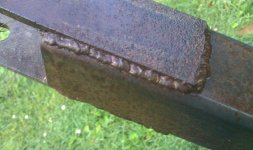PoorPlowboy
Platinum Member
You do realize that for the same setting a 220 volt machine is going to use less input amps and save you money? How can you talk about saving money buying a 120 volt welder when you paid $2000 for your machine that is a dual voltage machine. You have to stop this charade already. It's getting really old, really fast!:mur:
Electricity is sold by watts. Specifically kilowatt hours. 240v at 10 amps is the same number of watts as 120v at 20 amps. Where you may save some energy is that a more expensive machines may be more thermally efficient, but watt for watt cost the same in purchased power to run.

